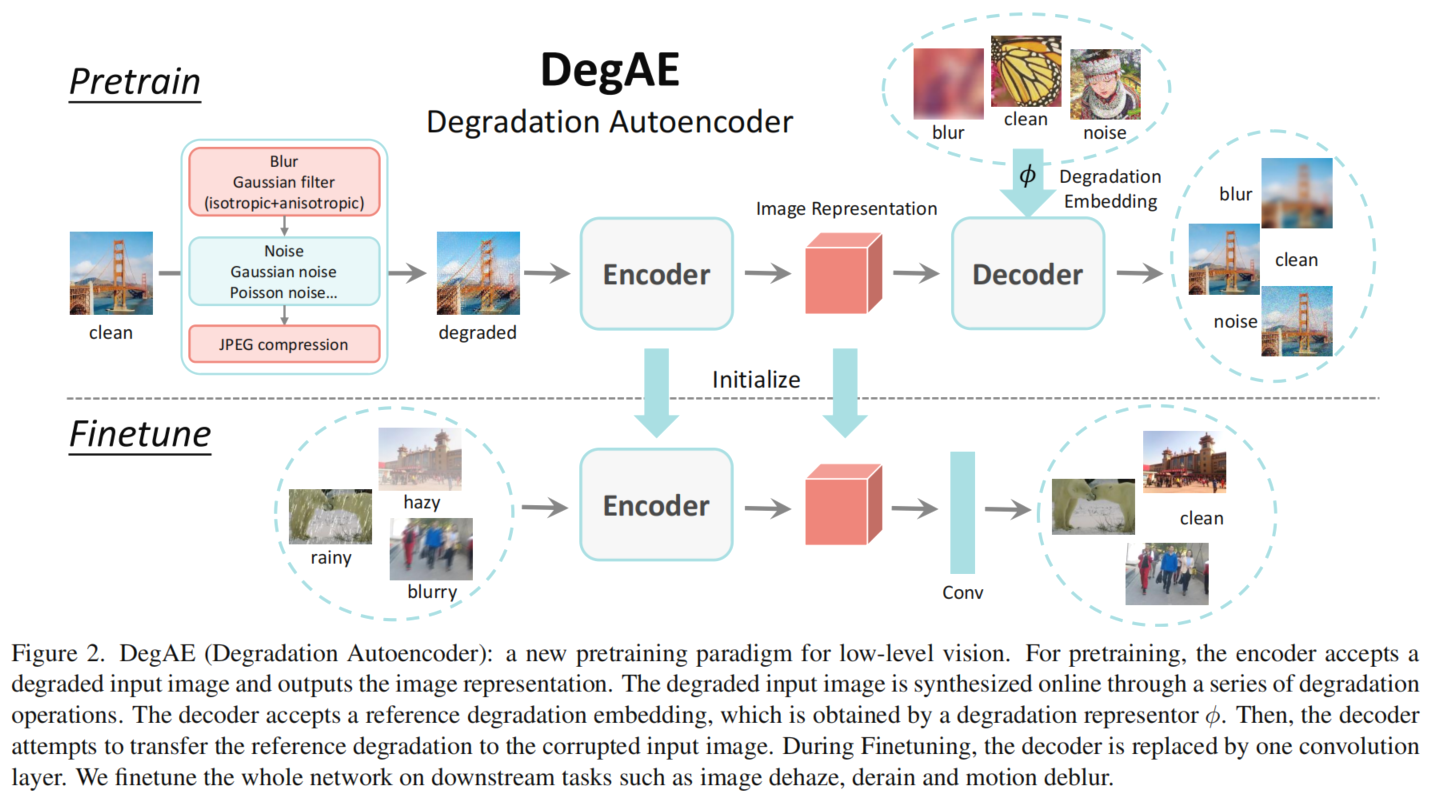DegAE: A New Pretraining Paradigm for Low-level Vision
Yihao Liu, Jingwen He, Jinjin Gu, Xiangtao Kong, Yu Qiao, Chao Dong

Self-supervised pretraining has achieved remarkable success in high-level vision, but its application in low-level vision remains ambiguous and not well-established. What is the primitive intention of pretraining? What is the core problem of pretraining in low-level vision? In this paper, we aim to answer these essential questions and establish a new pretraining scheme for low-level vision. Specifically, we examine previous pretraining methods in both high-level and low-level vision, and categorize current low-level vision tasks into two groups based on the difficulty of data acquisition: low-cost and high-cost tasks. Existing literature has mainly focused on pretraining for low-cost tasks, where the observed performance improvement is often limited. However, we argue that pretraining is more significant for high-cost tasks, where data acquisition is more challenging. To learn a general low-level vision representation that can improve the performance of various tasks, we propose a new pretraining paradigm called degradation autoencoder (DegAE). DegAE follows the philosophy of designing pretext task for self-supervised pretraining and is elaborately tailored to low-level vision. With DegAE pretraining, SwinIR achieves a 6.88dB performance gain on image dehaze task, while Uformer obtains 3.22dB and 0.54dB improvement on dehaze and derain tasks, respectively.